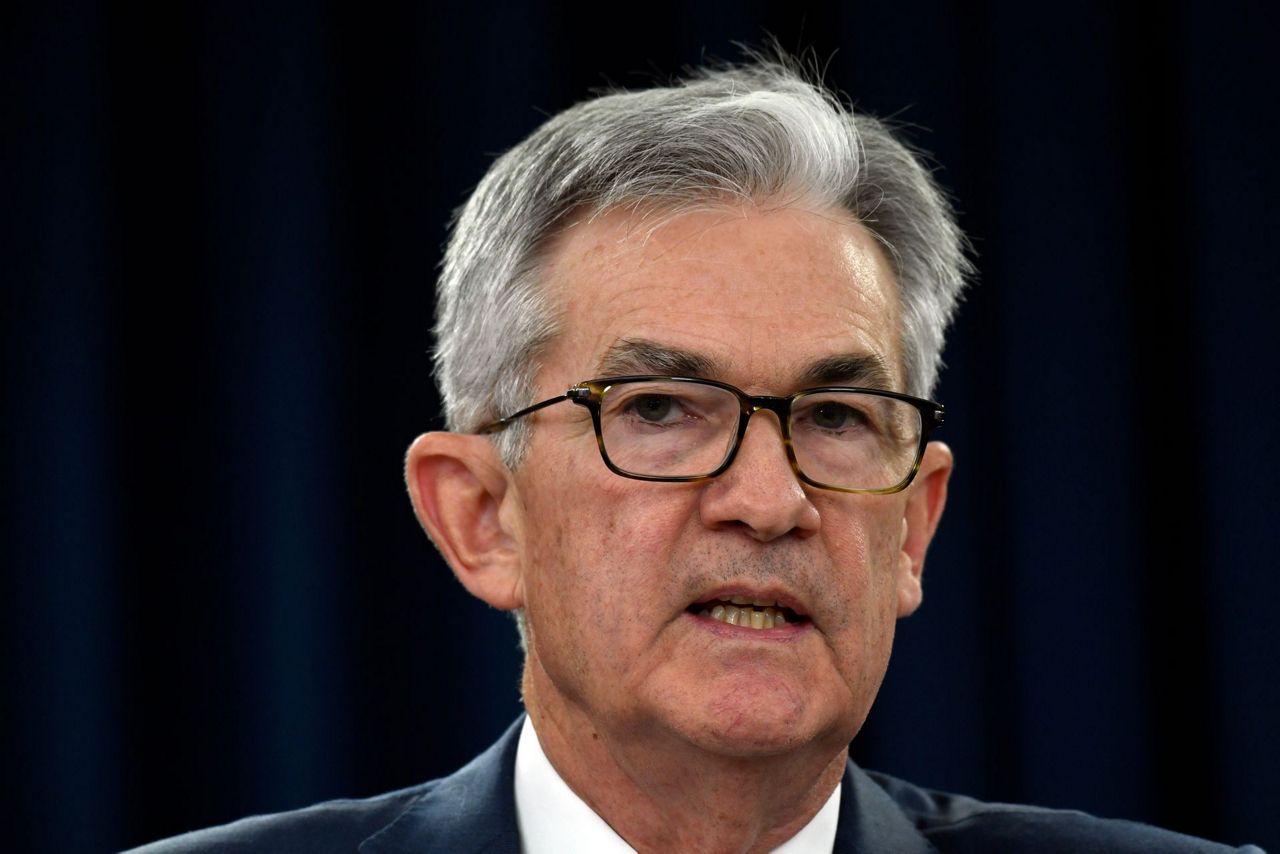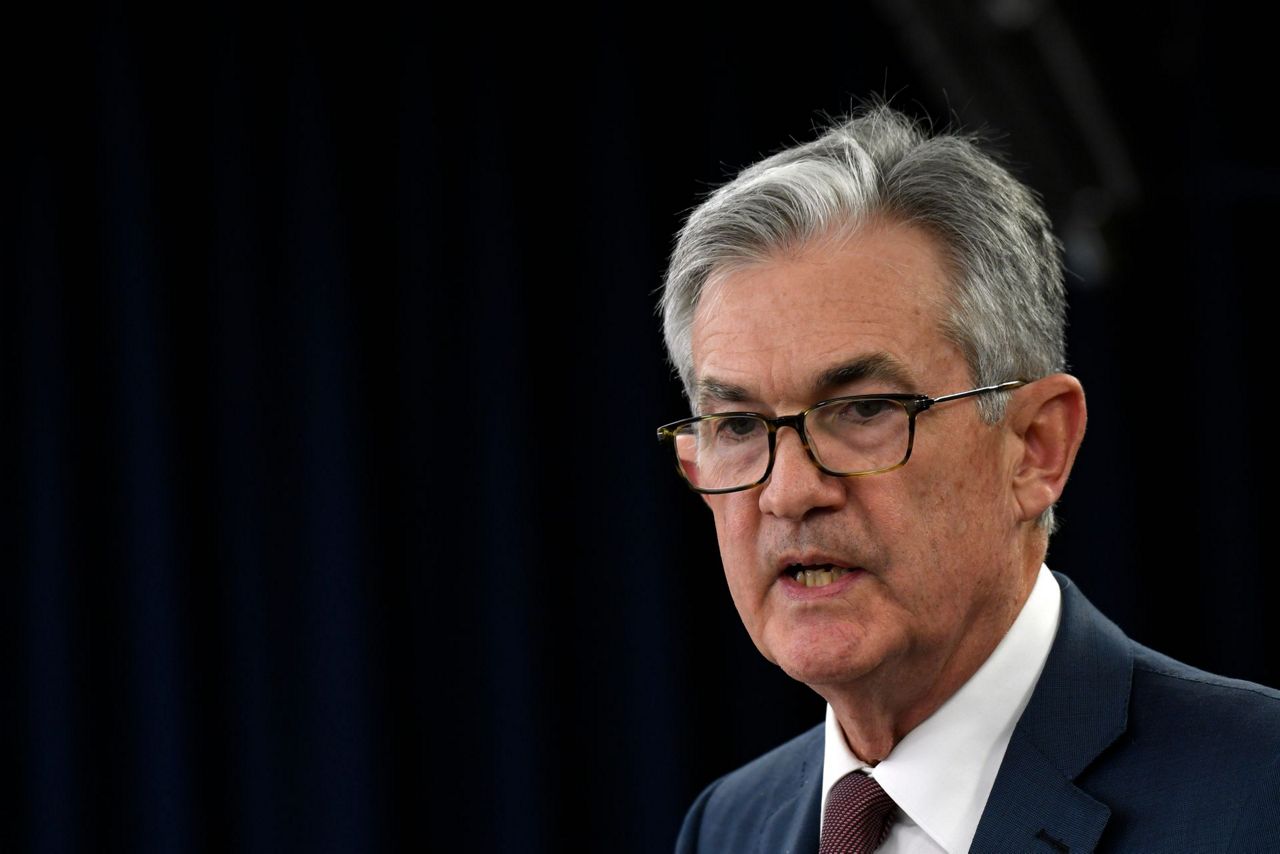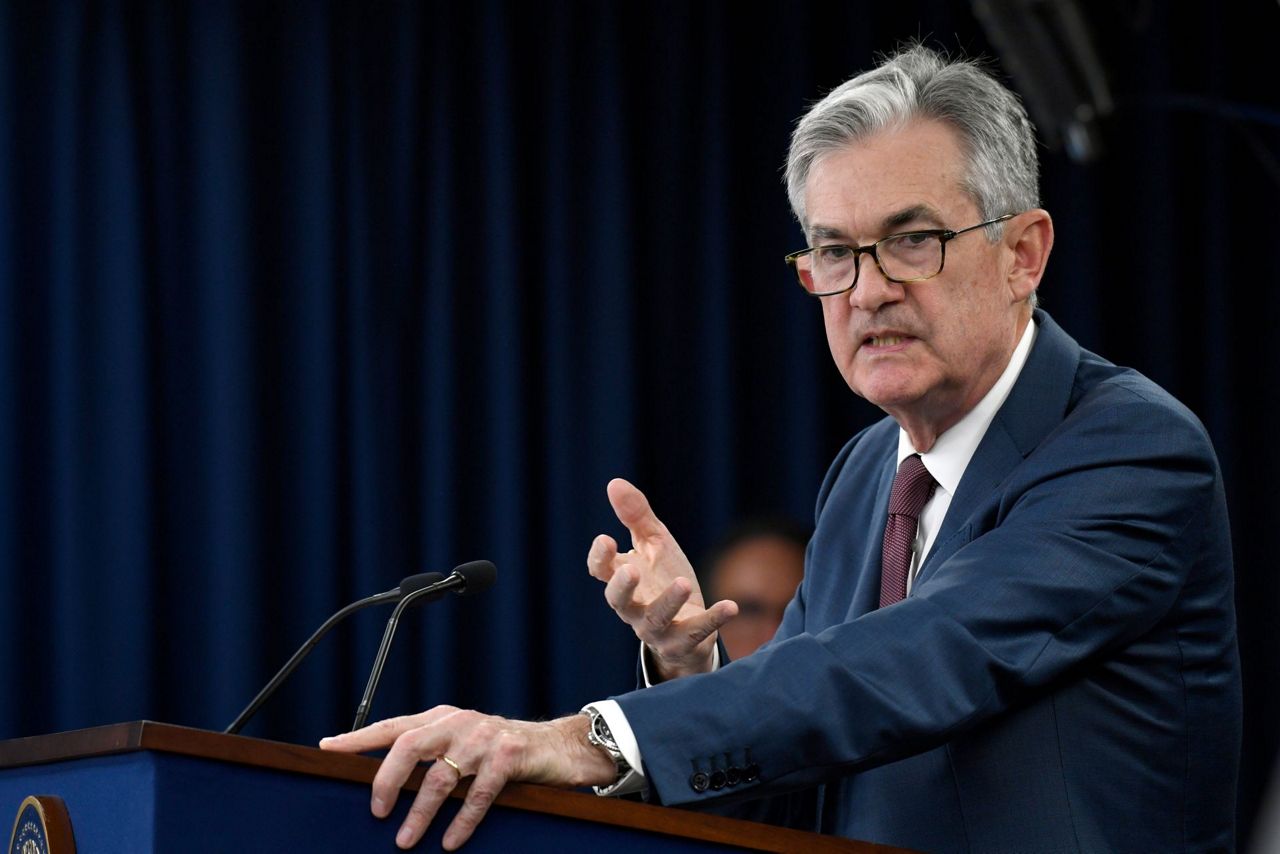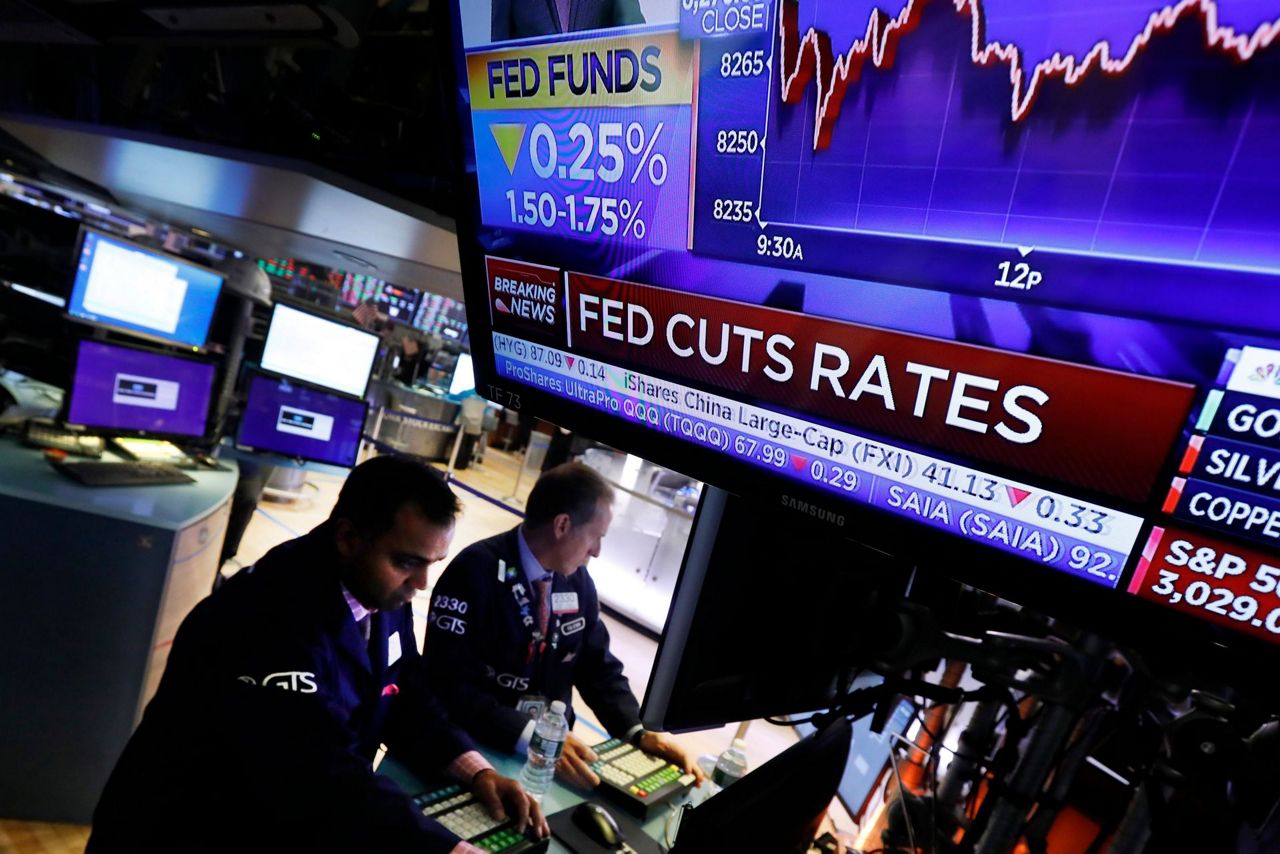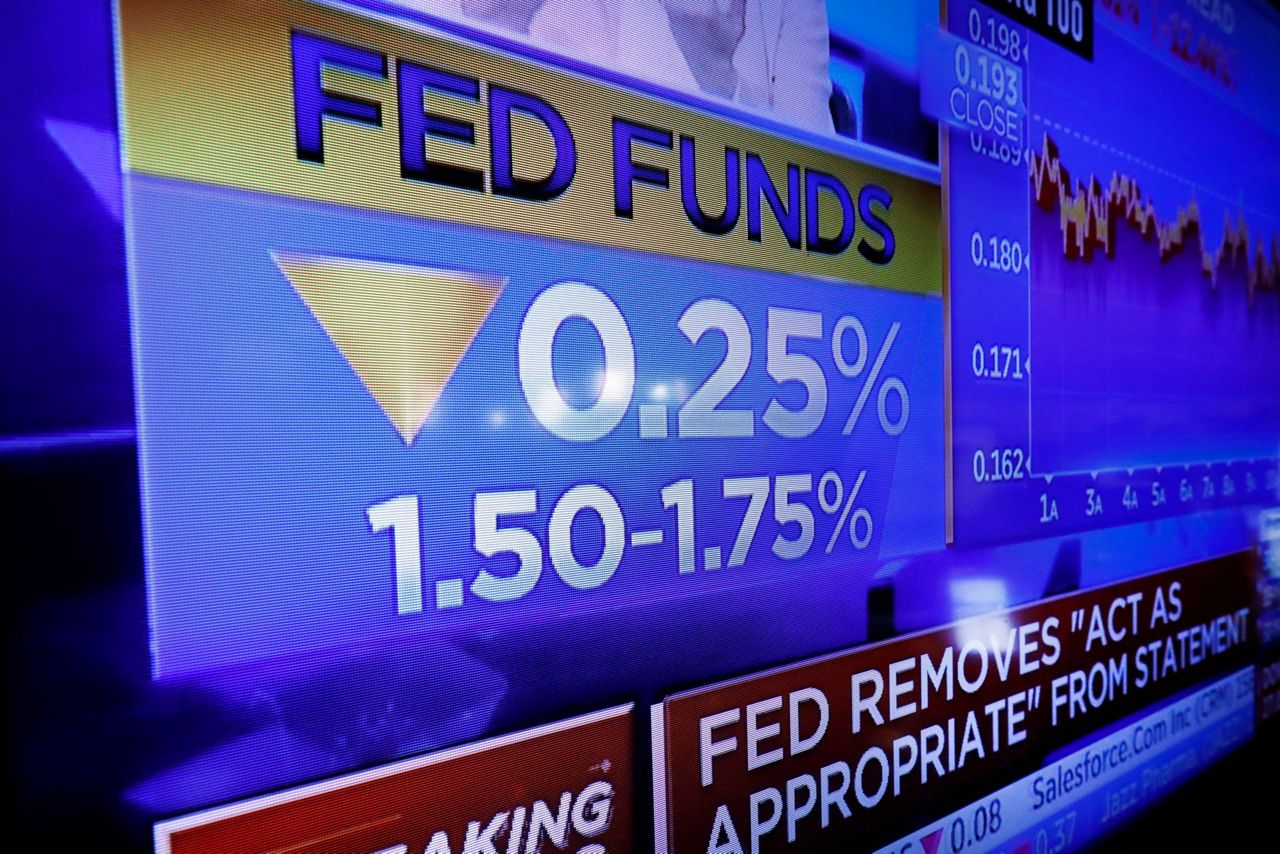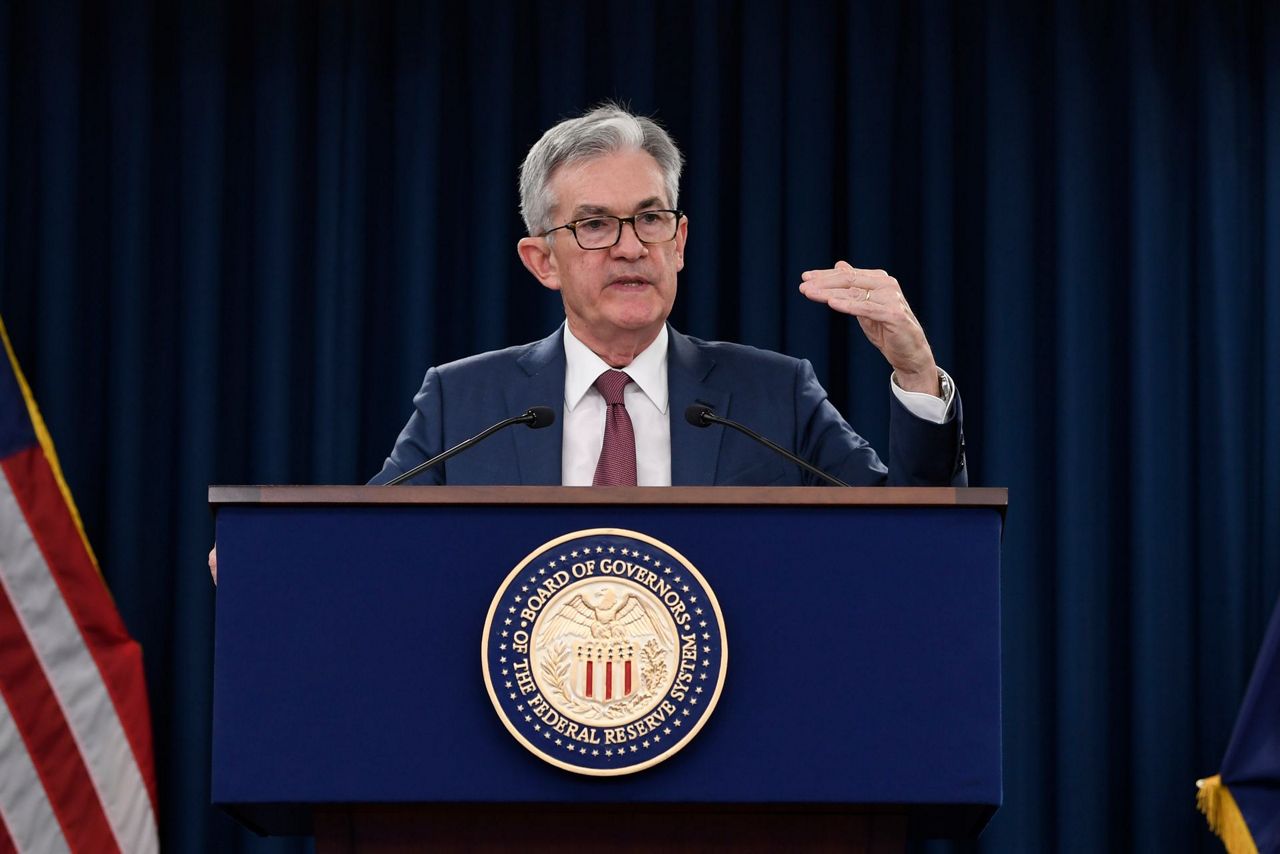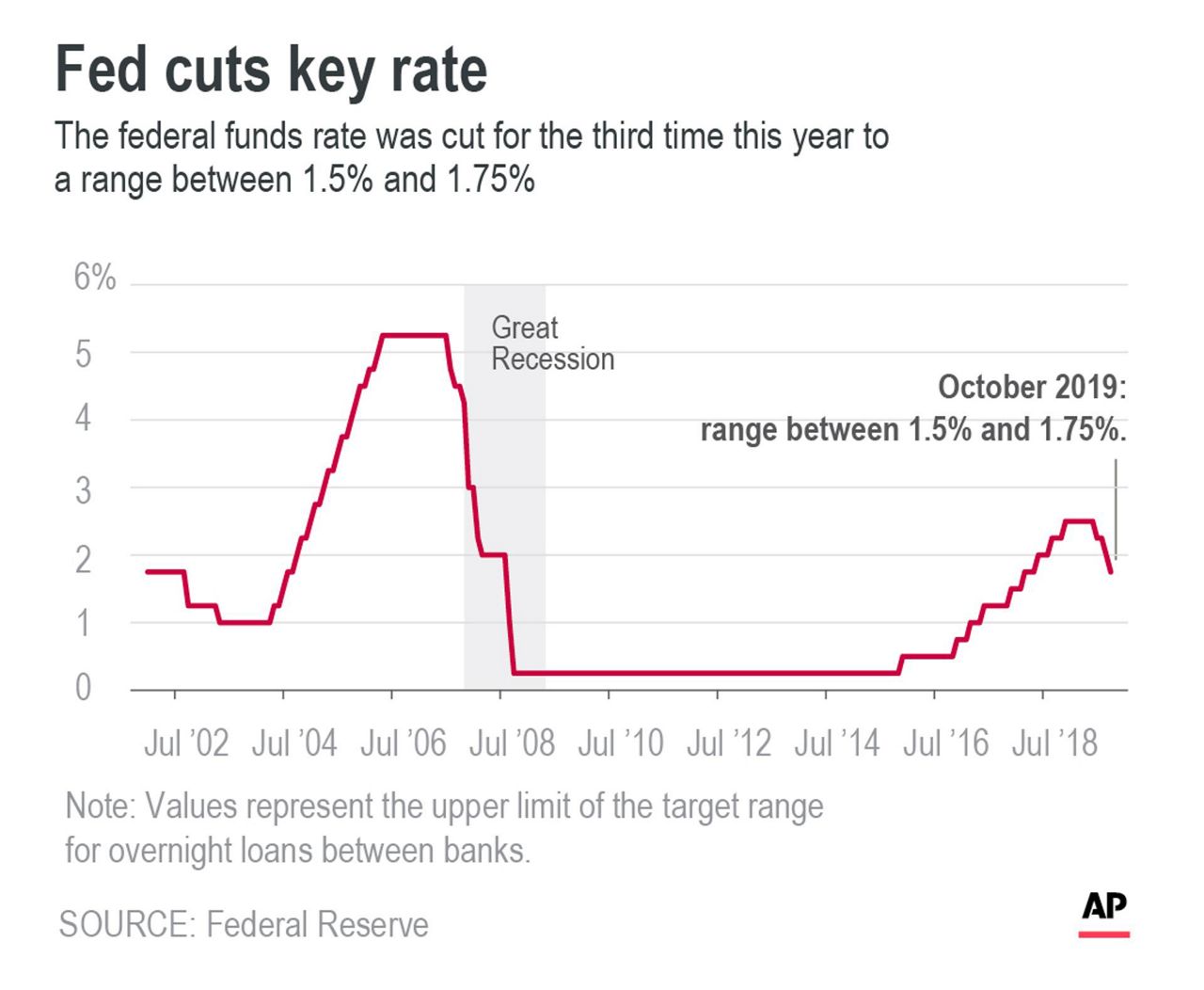WASHINGTON (AP) — The Federal Reserve cut short-term interest rates Wednesday for a third time this year to try to support the economy. But it signaled that it plans no further cuts unless it sees clear evidence that the economic outlook has worsened.
For now, Chairman Jerome Powell sounded a bullish note about the economy in a news conference after the Fed's latest policy meeting. Despite some signs of weakness, the Fed expects growth to continue and the job market to remain strong.
Since spring, manufacturing output has stumbled amid trade tensions and slower global growth, while businesses have cut spending on large equipment. But Powell stressed that the Fed doesn't see those trends weakening the broader economy. Instead, steady hiring is keeping unemployment very low, boosting consumer confidence, and encouraging more spending.
"Monetary policy is in a good place," Powell said. "If developments emerge that cause a material reassessment of our outlook we would respond accordingly. Policy is not on a pre-set course."
Some of the global and trade threats that have been bedeviling the economy have receded, Powell said, thereby reducing the need for future rate cuts. The U.S. and China have reached a tentative truce that has cooled their trade war. And the European Union has agreed to extend the deadline for the United Kingdom's exit from Oct. 31 to Jan. 31, lowering the likelihood of an economically disorderly "no deal" Brexit.
"On both, the risks appear to have subsided," he said. "That could bode well for business confidence and activity over time."
Investors appeared pleased with Powell's positive take on the economy. The Dow Jones Industrial Average closed up 115 points, or 0.4%. Analysts also noted that the year's third rate cut had been widely expected and that expectations for another cut at the Fed's next meeting, in December, were already dim.
"He clearly set the bar high for rate cuts in December and January," said Kathy Bostjancic, chief U.S. financial economist at Oxford Economics.
But Bostjancic and some other economists say they expect growth to keep slowing and to eventually force the Fed's hand. Bostjancic expects growth to decline to just 1.6% in 2020, below the Fed's forecast of 2%, and that the policymakers will cut rates sometime next spring.
Powell may be too optimistic about a defusing of the China trade and Brexit threats, Bostjancic said. While President Donald Trump and China's President Xi Jinping are seeking to agree to an initial pact next month, it would likely leave many significant areas of dispute between the two countries unresolved.
"He was wearing a little bit of rosy glasses with the trade talks and Brexit," she said. "Trade tensions are still going to remain."
The Fed's move Wednesday reduces the short-term rate it controls — which influences many consumer and business loans — to a range between 1.5% and 1.75%.
The policymakers dropped from their statement a key phrase they had used since June to indicate that a future rate cut was likely. That phrase said they would "act as appropriate to sustain the expansion." The Fed's new statement says instead that it will review the latest economic data as "it assesses the appropriate path" for its benchmark interest rate.
Two of the Fed's policymakers dissented from the decision: Boston Fed President Eric Rosengren and Kansas City Fed President Esther George said they preferred to leave rates alone. Both have dissented from all three rate cuts this year.
The economy is in its 11th year of expansion, fueled by consumer spending and a solid if slightly weakened job market. By cutting rates, the Fed has tried to counter uncertainties heightened by Trump's trade conflicts, a weaker global economy and a decline in U.S. manufacturing.
The third rate cut of the year has partly reversed the four hikes that the Fed made last year in response to a strengthening economy. That was before rising global risks led the Fed to change course and begin easing credit. Lower rates are intended to encourage more borrowing and spending.
Powell has said that the central bank's rate reductions were intended as a kind of insurance against threats to the economy. Powell has pointed to similar rate cuts in 1995 and 1998 as precedents; in both those cases, the Fed cut rates three times. He and most other Fed officials credit their rate cuts with lowering mortgage rates, boosting home sales and generally keeping the economy on track.
The Fed is also weighing the consequences of a decline in expectations for inflation. Lower inflation expectations can be self-fulfilling. This can pose a problem for the Fed because its preferred inflation gauge has been stuck below its 2% target for most of the past seven years.
In the meantime, Trump, via Twitter, has renewed his attacks on the Fed for not lowering its benchmark rate closer to zero. The president has contrasted the Fed's actions unfavorably with central banks in Europe and Japan, which have slashed their rates into negative territory. Though Trump has argued that this puts the United States at a competitive disadvantage, most economists regard negative rates as a sign of weakness.
The U.S. economy is still growing, and hiring remains steady, though there have been signs of a slowdown in recent data. Americans cut back on spending at retailers and restaurants last month, a worrisome sign because consumer spending is the leading engine of economic growth. Still, consumer confidence remains high, and shoppers could easily rebound in the coming months.
Earlier Wednesday, the government estimated that the economy grew at a tepid but steady 1.9% annual rate during the July-September quarter. That report showed that businesses cut back on their investment in new equipment and buildings by the most in nearly four years.
But it also showed that the housing market helped drive growth for the first time in seven quarters, as home purchases and renovations have increased. Powell credited the Fed's interest rate cuts for spurring those gains, along with greater spending on cars and appliances.
Copyright 2019 The Associated Press. All rights reserved. This material may not be published, broadcast, rewritten or redistributed.



